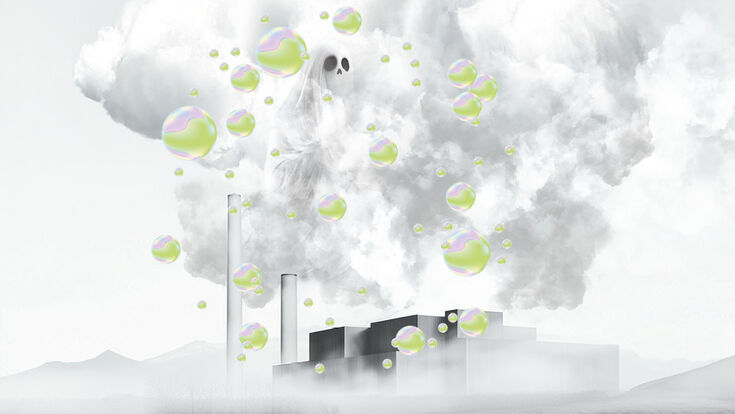Forever Chemicals : PFAS in Waste-to-Energy facilities: A burning question

In the world of waste management, few topics have generated as much heat as PFAS—per- and polyfluoroalkyl substances. Dubbed "forever chemicals," PFAS have crept into nearly every corner of our lives, from waterproof jackets to pizza boxes, and now, they’re making waves in the waste-to-energy (WtE) sector. As waste professionals, understanding how PFAS interact with WtE systems is essential for navigating the challenges these chemicals pose.
Related article: "PFAS contamination presents both opportunities and challenges for the waste management industry"
What’s the fuss about PFAS?
PFAS are a group of synthetic chemicals that have been used since the mid-20th century for their durability and resistance to heat, water, and oil. Think of Teflon-coated pans, stain-resistant fabrics, and firefighting foams—they all owe their utility to PFAS. Unfortunately, the very properties that make PFAS useful also make them a nightmare for the environment. These compounds are highly resistant to degradation, meaning they persist in soil, water, and even our bodies.
The persistence of PFAS raises serious concerns about their health impacts, including potential links to cancer, hormone disruption, and immune system problems. For waste management professionals, the big question is: where do PFAS go when we dispose of them?
Related article: Water Treatment: Perfectly filtered
PFAS and WtE: What we’re learning
WtE facilities, which incinerate municipal solid waste to generate electricity or heat, might seem like a perfect solution to handle PFAS-contaminated waste. After all, these facilities operate at extremely high temperatures—typically above 850°C (1,562°F)—which should, in theory, break down most organic compounds. But PFAS are no ordinary chemicals, and their behavior in WTE plants is anything but straightforward.
Recent studies have shed light on the fate of PFAS in WTE systems, and the findings are both fascinating and sobering.
- Persistence despite high temperatures
Research published in 2023 in Environmental Science & Technology suggests that while many PFAS compounds break down at high temperatures in WtE facilities, some fluorinated byproducts can form. These byproducts, often smaller and more volatile, may escape into air emissions or collect in fly ash. - Air Emissions and Potential Risks
Advanced air pollution control technologies, such as activated carbon filters, can capture some of these volatile PFAS compounds. However, the efficiency of these systems varies, and low-level emissions of PFAS may still occur. - PFAS in residues
A study by the Solid Waste Association of North America (SWANA) highlights that while WtE facilities can reduce the volume of PFAS they don’t simply vanish during incineration. Instead, they can partition into different waste streams, including bottom ash, fly ash, and flue gas treatment residues. This complicates the disposal of these residues, as the leaching of PFAS from ash into soil and water remains a concern.
Why should waste professionals care?
For waste professionals, the presence of PFAS in WtE facilities isn’t just a technical issue—it’s a regulatory and reputational one. As governments worldwide tighten controls on PFAS emissions and disposal, WtE operators are under increasing scrutiny to demonstrate that their systems are both effective and safe.
Moreover, public perception plays a big role. Communities may view WtE facilities as contributors to PFAS pollution, even if emissions are minimal. Transparent communication and proactive measures will be key to building trust and maintaining a positive relationship with the public.
Looking ahead
PFAS are a challenge, but they also represent an opportunity for innovation in the waste sector. By embracing new technologies, engaging with stakeholders, and prioritizing sustainable practices, WtE facilities can play a pivotal role in managing these persistent pollutants.
For now, waste professionals should keep a close eye on the science and regulations surrounding PFAS. The more we learn, the better equipped we’ll be to tackle these "forever chemicals" and ensure that waste-to-energy remains a viable and responsible part of the waste management toolkit.
Read more about the topic in our interview with Stina Jansson, Associate professor at the Department of Chemistry at Umea University. Together with her colleagues Sofie Björklund and Eva Weidemann she researches PFAS in WtE.

